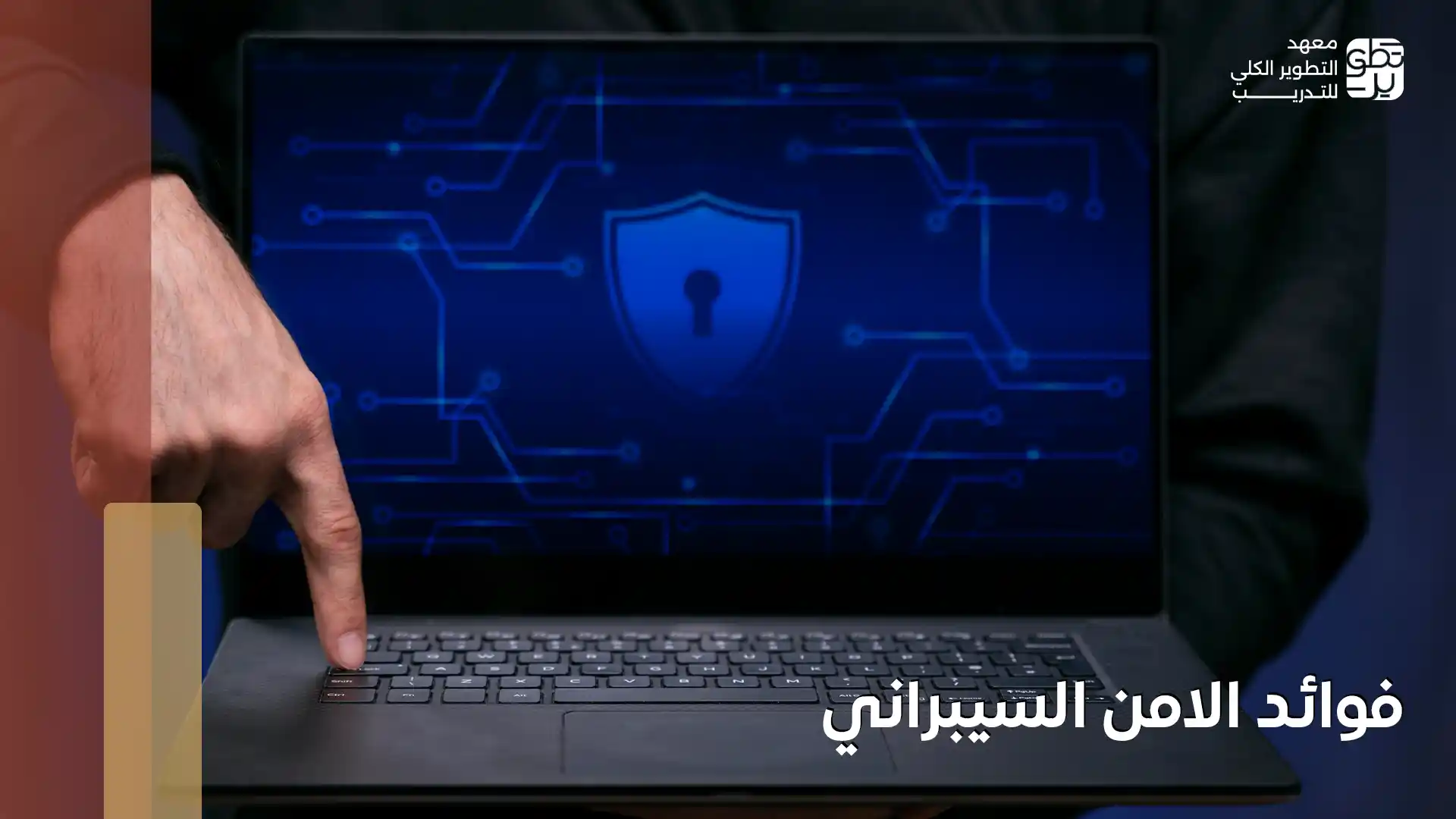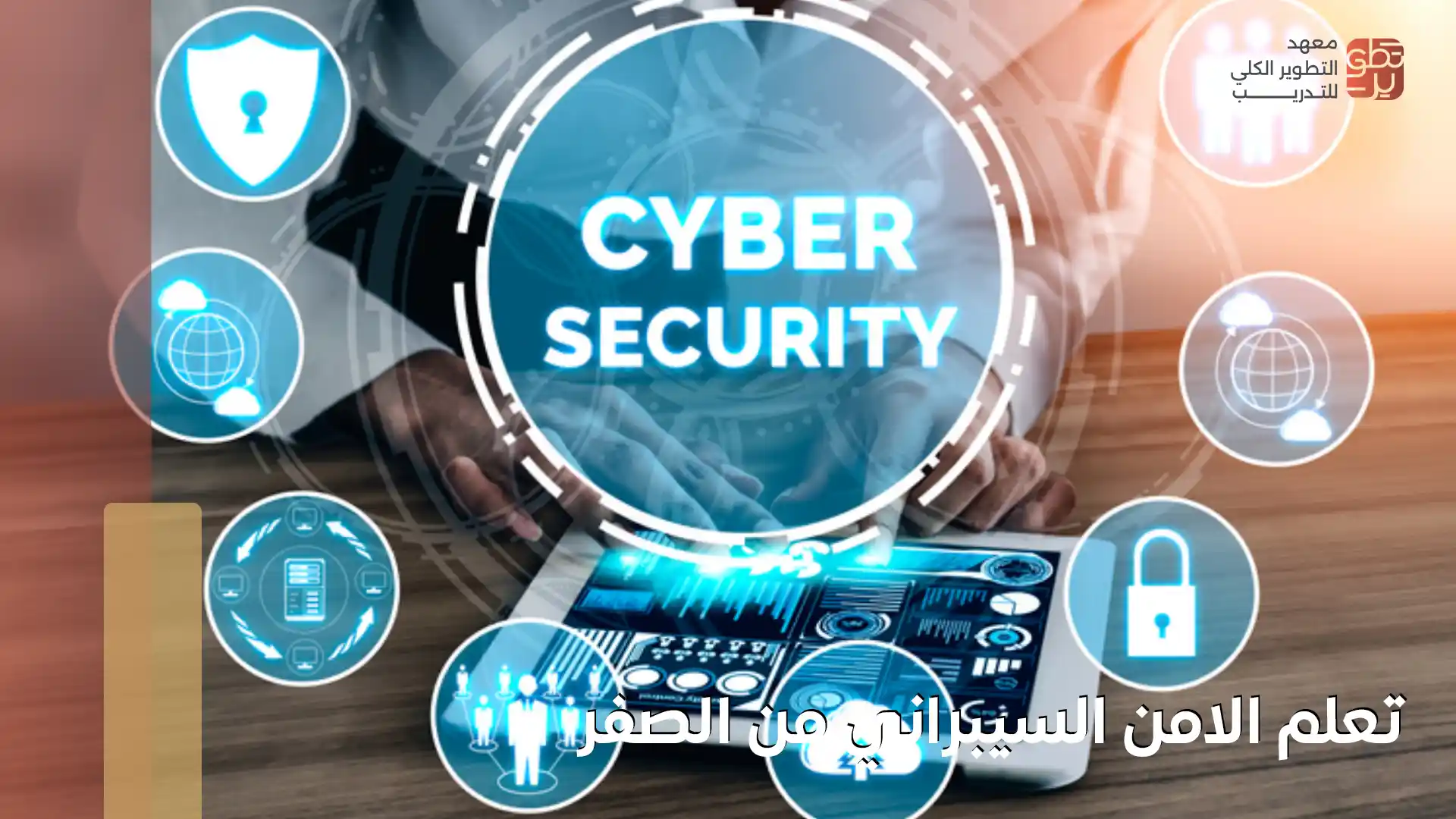
It is indisputable that everything we do today is connected to the internet, from work and education to banking services and business management. This heavy reliance brings with it a constant risk of cyberattacks.
This is where the importance of cybersecurity comes in as a primary defense to protect data, individuals, and organizations.
In this article, we will explore the role of cybersecurity, its various types, the challenges that may arise during its implementation, the disadvantages of cybersecurity, and finally, we will guide you to the best training providers that can help you acquire these essential skills. If you’re thinking of entering this field, this is your opportunity to understand the full picture and start in a structured way.
Benefits of Cybersecurity
Cybersecurity is one of the fundamental pillars in protecting information and technology systems within organizations and for individuals. As digital threats increase, its benefits extend beyond the technical aspects to include operational and economic impacts. Here are the key benefits of cybersecurity:
- Protecting Personal, Financial, and Commercial Information: Cybersecurity helps secure personal, financial, and commercial data from breaches or leaks, reducing the chances of digital extortion or identity theft.
- Ensuring Stable Work Environments: Cybersecurity ensures the continuity of operations without interruptions from cyberattacks, which helps reduce operational losses and maintain customer trust.
- Cost Savings: Cyberattacks can be extremely costly for businesses if they are not protected, making investing in cybersecurity cheaper compared to the costs of resolving breaches later.
- Increasing Customer Loyalty: When customers feel their data is secure, their loyalty to the brand or organization increases, enhancing the relationship and boosting future collaboration opportunities.
- Compliance Requirements: Many countries require organizations to have cybersecurity systems in place as part of their compliance policies, making protection not just an option, but a legal necessity in certain sectors.
- Reducing Service Interruptions: Cyberattacks often lead to digital service shutdowns, but a strong cybersecurity system can help detect vulnerabilities early and resolve them before the issue escalates.
At The Macro Development Training Institute, we work on empowering individuals and teams to understand and apply cybersecurity principles in practical and up-to-date ways through accredited training programs that meet the demands of the Saudi and Gulf markets.
What Is the Role of Cybersecurity?
When we ask, "What is the role of cybersecurity?" we find that cybersecurity plays a central role in protecting digital information and securing the technical infrastructure of organizations and individuals. The role of cybersecurity encompasses a range of essential tasks aimed at minimizing digital risks and ensuring system stability. Here are the main tasks of cybersecurity:
- Threat Analysis and Vulnerability Detection: Cybersecurity specialists assess systems for potential weaknesses and vulnerabilities, aiming to fix them before attackers exploit them.
- Preventing Cyberattacks: The role involves setting policies and procedures to block malware, ransomware, and hacking attempts from entering networks and systems.
- Continuous System Monitoring: Cybersecurity involves real-time monitoring of security performance to quickly and effectively detect unusual activities or potential threats.
- Incident Response: When a security breach occurs, an immediate response plan is implemented to minimize the impact of the attack, restore damaged data, and identify the source of the threat.
- Raising Awareness and Training Employees: Part of the role involves educating employees within organizations about digital security risks and how to handle phishing emails and suspicious links.
- Ensuring Legal and Regulatory Compliance: The role of cybersecurity ensures that organizations comply with legal and regulatory standards, especially in sensitive sectors like finance and healthcare.
Due to the multiple benefits of cybersecurity and its importance, The Macro Development Training Institute offers specialized programs to equip you with the necessary skills in this field, through accredited and up-to-date training content that keeps pace with global digital developments.
Types of Cybersecurity
To fully understand the benefits of cybersecurity, it is important to recognize its various types, as security tasks are divided into specialized areas, each focusing on a specific aspect of digital protection. Here are the main types:
- Network Security: Focuses on protecting network infrastructure from threats such as hacking, spying, and identity theft.
- Application Security: Deals with securing software applications from coding vulnerabilities and attacks that target weak codes.
- Device Security: Involves protecting computers, phones, and servers from viruses and malware, ensuring they operate in a safe environment.
- Data Security: Focuses on safeguarding sensitive and confidential data from unauthorized access or modification, whether during storage or transmission.
- Cloud Security: Involves securing data and systems stored or managed on cloud computing platforms from breaches or loss.
- Operational Security: Involves setting policies and procedures that ensure security tasks are implemented in an organized and monitored manner within the organization.
Covering these types of cybersecurity strengthens its benefits and significantly reduces digital risks. You can deepen your understanding of each type and learn how to apply it in the workplace through programs offered by The Macro Development Training Institute.
The Difference Between Cybersecurity and Information Security
Although the terms "cybersecurity" and "information security" are sometimes used interchangeably, there is a significant difference between them in terms of scope and focus. Here’s the distinction:
| Standard | Cybersecurity | Information Security |
|---|---|---|
| Scope | Focuses on protecting systems and networks from cyber-attacks targeting devices and software. | Focuses on protecting all types of information, whether digital or physical, and safeguarding it in all work environments. |
| Goal | Protecting technical infrastructure (networks, servers, and systems) from cyber-attacks like viruses, malware, and DDoS attacks. | Protecting information in all forms (digital, paper, or stored in electronic systems) to ensure confidentiality, integrity, and availability. |
| Field | Secures the digital environment and systems connected to the internet, protecting them from cyber threats. | Includes maintaining security for all types of information, whether electronic or non-electronic, with a focus on policies and controls. |
| Techniques Used | Firewalls, antivirus software, intrusion detection systems (IDS), and encryption. | Includes both technical and administrative procedures like authentication, access control, data loss prevention, and encryption. |
| Targeted Threats | Cyber threats targeting electronic systems, such as viruses, cyber-attacks, and DDoS attacks. | Threats affecting information in general, whether physical or digital, like unauthorized access or data loss. |
| Administrative Approach | Implemented by specialized technical teams focused on network and system protection. | Encompasses a broader approach including policies governing security across all work environments, including employees, systems, and physical data. |
From Benefits of Cybersecurity is that Cybersecurity a part of information security, focusing on protecting systems and networks from electronic threats. On the other hand, information security encompasses the overall protection of all types of information in any environment, whether digital or physical, ensuring data confidentiality and integrity.
Disadvantages of Cybersecurity
Despite the numerous benefits of cybersecurity in protecting data and digital systems, its implementation does come with some challenges and drawbacks that need to be acknowledged and dealt with wisely. Here are the main disadvantages of cybersecurity:
- High Operational Costs: These include costs for infrastructure and hiring specialized personnel.
- Performance Slowdown: In some cases, strict protection protocols can cause network or application performance issues, especially if not properly balanced.
- User Inconvenience: Increased security may require additional verification steps, which can make users feel uncomfortable or cause delays in completing tasks.
- Difficulty Adapting to Constant Updates: Cybersecurity technologies evolve rapidly, forcing organizations to continually update their tools and policies to keep up with new threats.
- Privacy Concerns: The use of advanced surveillance techniques may conflict with employee privacy if no clear controls are set for their use.
Nevertheless, the benefits of cybersecurity far outweigh these challenges, especially when implemented wisely and efficiently. Therefore, The Macro Development Training Institute offers specialized programs to help you understand these challenges and learn how to design effective security systems without impacting work efficiency or user comfort.
Cybersecurity Course Requirements
Cybersecurity courses are essential in the digital age to protect systems and networks from cyber threats. To make the most of these courses, there are several basic requirements that trainees should possess. Here are the key requirements to benefit from cybersecurity training:
| Requirement | Description |
|---|---|
| Basic Knowledge in Information Technology | Trainees should have a foundational understanding of computer systems and networks, including programming, system administration, and network fundamentals. |
| Basic Understanding of Networks | Trainees should be familiar with how networks and basic protocols such as TCP/IP, DNS, and HTTP work, as well as how to set up and maintain networks. |
| Basic Programming Knowledge | Some courses may require basic knowledge of programming languages like Python or C++ to understand software development and identify vulnerabilities. |
| Familiarity with Operating Systems | Understanding how operating systems like Windows and Linux work is essential for securing systems and discovering vulnerabilities in different environments. |
| Internet Tools Usage | Trainees should be familiar with how the internet works and know how to use tools such as firewalls, antivirus software, and malware protection. |
| Analytical Thinking Skills | Trainees must be able to think analytically to solve security problems, identify vulnerabilities, and develop solutions to mitigate them. |
| Knowledge of Personal Security and Protection | Trainees should know how to protect personal data and use basic security methods such as two-factor authentication to secure accounts and systems. |
| Motivation and Willingness to Learn | Trainees should have a strong desire to continuously learn and stay updated with the latest developments in technology and emerging threats. |
hese basic cybersecurity course requirements help build a solid foundation of knowledge and understanding in this field. If you possess these skills and backgrounds, you will be able to maximize your benefit from the course and advance in this growing field.
Target Audience for Cybersecurity Courses
Cybersecurity courses are not aimed at a single group, but rather encompass a wide range of professionals and fields that need a strong understanding and effective solutions to protect data and systems from increasing threats. Here are the target audiences for cybersecurity courses:
| Target Audience | Description |
|---|---|
| IT Beginners | Individuals with little to no background in information technology or cybersecurity. They are learning the basics of threat protection and how to secure systems. |
| IT Professionals | IT professionals who want to enhance their skills in securing networks, systems, and protecting data from cyber threats. |
| Network Engineers | Engineers specializing in network design and management who want to learn techniques to secure networks and protect them from cyberattacks. |
| Digital Security Experts | Professionals working in cybersecurity who want to update their skills with advanced techniques and methods for combating modern cyber threats. |
| Information Security Managers | Individuals responsible for setting security strategies within companies, needing a deeper understanding of how to manage risks and handle security incidents. |
| Data Analysts | Analysts working with big data who need to learn how to protect data stored in different systems from attacks. |
| Software Developers | Developers who write applications and software and want to learn how to protect applications from attacks like SQL injections and other hacking techniques. |
| Network Security Consultants | Analysts who provide consulting to companies on securing networks and identifying security gaps. |
| Organizations and Companies | Businesses seeking to train employees in cybersecurity to protect systems and safeguard sensitive data. |
| IT Students | Students in IT fields who want to develop their cybersecurity skills to meet job market demands. |
Best Training Institutes for Cybersecurity Courses
Choosing the right training provider makes a significant difference in the quality of learning, especially in a sensitive field like cybersecurity. To truly benefit from the advantages of cybersecurity, a training institute must meet several important criteria, including:
- Offering accredited training programs that cover the latest concepts and techniques in digital protection.
- Combining theoretical and practical education to ensure that the trainee can handle real-world challenges in the workplace.
- Having certified trainers with practical experience in fields like network security, data security, and infrastructure protection.
- Utilizing modern digital education tools such as virtual classrooms and technical simulations, which enhance the understanding and application of concepts.
- Providing flexible remote training, allowing learning at any time and from any place while maintaining content quality.
The Macro Development Training Institute combines these criteria and offers comprehensive cybersecurity programs suitable for beginners and professionals, supporting them in acquiring the required skills in the job market with confidence and competence.
In conclusion, whether you’re a tech professional or just starting, understanding the benefits of cybersecurity prepares you to face digital challenges more effectively. Start planning your next course and check out the cybersecurity programs at The Macro Development Training Institute, designed carefully to provide you with the skills you need. Training starts with a decision, and the next step is in your hands.
Frequently Asked Questions
Can cybersecurity be learned remotely?
Yes, there are many online cybersecurity courses that provide professional and comprehensive training through the internet.
How do I start learning cybersecurity?
Start by defining your goal, then choose an accredited course that covers the basics, preferably from a trusted provider such as The Macro Development Training Institute.




